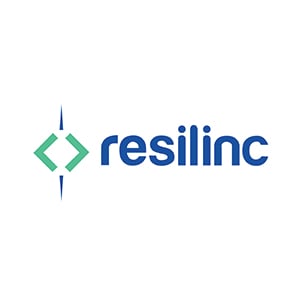When It Comes to ESG Risk, Supply Chain Visibility is Key
Sponsored Content
Contributed article by Bindiya Vakil, CEO of Resilinc
Supply chains create jobs, deliver critical materials, and support consumer needs. From bandages to bananas; televisions to treadmills; pots to pans, all are brought to us, courtesy of supply chains. However, this convenience sometimes comes at a cost — and that price is often paid by the impoverished, the desperate and the environment.
Thankfully, the world is changing, and it’s becoming harder for companies to deny what’s going on behind the scenes. Cellphone footage, social media, and non-government organizations (NGOs) are bringing these injustices to light and the days of plausible deniability are over. Beyond that, countries around the world are passing their own legislation regarding environmental, social, governance (ESG) to ensure protection of the environment and human rights. The US’ Uyghur Forced Labor Prevention Act (UFLPA), the German Supply Chain Due Diligence Act, and the EU Due Diligence Act are all examples.
Through these Acts companies are going to be required to conduct due diligence - not only at their own factories - but also at their suppliers’ locations (and their suppliers’ suppliers’ locations). And, it won’t be enough to collect a supplier’s office address. Companies are going to be required to identify all factory locations and assess them for labor and environmental business practices. To be effective however, the assessing, screening and monitoring must go beyond high-volume, Tier 1 suppliers (a crucial element considering 80% of supply chain issues originate with sub-tier suppliers).
From a supply chain risk standpoint, this is where ESG assessments, monitoring, and screening come in. Supply chain experts need to make sure supply chains are clean and clear and that there are no labor, safety or pollution violations that could negatively impact the brand or lead to legal trouble. A single violation or compliance issue at a supplier can lead to serious supply disruptions, including factory shutdowns, business licenses getting revoked, materials being held up at customs points or worse.
As more regulations and requirements are anticipated, the time to start thinking about ESG risk is now. So where to start? The journey to compliance begins with multi-tier visibility into your entire supply chain.
Multi-Tier Supply Chain Mapping
For a full picture of your entire supply chain, you must go deeper than Tier-1 suppliers. By mapping your suppliers and your suppliers’ suppliers (ideally down to the part-site level), you’ll achieve multi-tier visibility, including what countries and factories you source commodities, parts and materials from. This is critical to mitigating ESG risk considering 80% of supply chain issues originate with sub-tier suppliers.
Let’s take a pair of jeans for example. Long before they get to a retail shelf, the cotton used to make them is grown and harvested by laborers on a farm. From this first touch point, there are likely 3-4 additional touch points (fabric production, assembly, warehousing and distribution, etc) prior to the jeans hitting consumer hands (or legs). Knowing about how all these suppliers are connected, across tiers and what is happening at each of these touch points is important from a sustainable and ethical sourcing perspective.
Monitoring and Screening
Once you’ve mapped your supply chain down to the sub-tier level, the next step is to monitor it 24/7 for risks and potential disruptions. Knowledge what’s happening and where across your supplier network allows a deeper understanding of potential issues and the ability to offset any brand, legal or logistical trouble. Such issues can result in production halts, investigations, lawsuits and regulatory action.
Be sure you are monitoring your suppliers across key risk areas. Examples include health and safety issues, unpaid wages, underage labor, illegal overtime, pollution violations, bans, warnings and investigations.
When it comes to screening for supply chain risks related to ESG, some common principles and best practices should be applied:
Quantify. Once monitoring is underway, highlight or note which suppliers have more robust ESG policies and practices. This way, you can single out those suppliers that might be more vulnerable and potentially cause legal, brand or supply issues.
Mitigate. Work with the at-risk suppliers to develop joint plans to close gaps and ensure limited exposure to any trouble. If the risk is too great, it might make sense to terminate the relationship and find a new supplier.
Track. Maintain active tracking and report whatever mitigation plans you have in place to close gaps.
Launching an ongoing supplier risk assessment (survey) program specific to a piece of legislation or ESG practices is another recommended best practice. This is where working with a supply chain risk management (SCRM) provider that has accumulated years of supplier assessments and risk intelligence data can really help.
A recent report from Proxima found that investors are concerned about inaction. In fact, 84% stated that issues with supply chain sustainability and ESG standards are a risk to their investments. For these monetary reasons - in addition to reputational and ethical reasons - now is the time for supply chain practitioners to prioritize visibility into their full supply chains. Your reputation and supply chain depends on it.
Bindiya Vakil is chief executive and co-founder of Resilinc.


